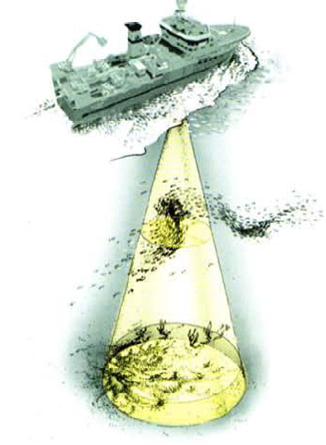Recording acoustic data from the surface to 4500 m depth with an AZFP attached to the rosette.
Date:
Recording acoustic data from the surface to 4500 m depth with an AZFP attached to the rosette.
Marian Peña, Santiago Hernández-León
There is a growing interest in the study of mesopelagic and bathypelagic micronektonic species due to ecological reasons, their potential commercial explotation and their implication in the active carbon flux. Vessel-borne echosounders have been widely employed for their study but the limitation in range, particularly for the higher frequencies, has raised the use of alternative platforms such as gliders or net-attached echosounders. Previous studies have gathered close-range acoustic data up to 800-1000 depth but, to our knowledge, there is no record of such data at the bathypelagic zone. This presentation will summarize several projects where a deep version (6000 m) of the Acoustic Zooplankton Fish Profiler (AZFP, ASL Environment) equipped with 38, 125, 200 and 455 kHz transducers was attached to the rosette. Comparisons with the vessel-borne EK60 echosounder as well as pros and cons of the equipment and platform settings will be discussed.
